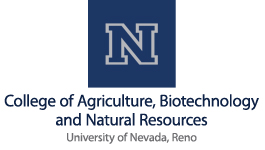Team:Nevada/plants as remote sensors
From 2010.igem.org
(→Plants as Remote Sensors) |
|||
| Line 10: | Line 10: | ||
<p>The passage of “The Stockholm Convention on Persistant Organic Pollutants” in 2008 clearly demonstrates that the world has taken a much more active approach in addressing concerns about the environmental and ecological impact of pollutants (Rodriguez-Mozaz et al, 2006). By demonstrating the practicality of plants as model biosensors for remote sensing, the Nevada team has addresses several issues that have plagued the field of biosensors since their original conception. First by utilizing a natural receptor that can be localized to a specific cell type in plants, Nevada has shown the usefulness of transgenic plant biosensors that will respond locally to toxic compounds. In addition, natural biosensors that do not inhibit basic metabolic functions and only fluoresce allow for a simpler model system that is easily adapted for future uses. Secondly, model plant organisms are much larger reporters of environmental stresses and can be easily clustered together to form ‘reporter clusters’ that are easily viewed at the source of the contamination. Finally, the natural life cycle of plant organisms (when compared to traditional microorganism biosensors) is much longer and allows for the continued monitoring of a contaminated area over a much longer time while still providing a feasible option to control the plant’s reproductive cycle. As discussed in “Perspective on Optical Biosensors and Integrated Sensor Systems” (Ligler, 2009), the use of on-site optical biosensors to tackle complex and difficult issues like environmental monitoring, food testing, and even counter- terrorism are driving issues in the proliferation of remote sensing technology.</p> | <p>The passage of “The Stockholm Convention on Persistant Organic Pollutants” in 2008 clearly demonstrates that the world has taken a much more active approach in addressing concerns about the environmental and ecological impact of pollutants (Rodriguez-Mozaz et al, 2006). By demonstrating the practicality of plants as model biosensors for remote sensing, the Nevada team has addresses several issues that have plagued the field of biosensors since their original conception. First by utilizing a natural receptor that can be localized to a specific cell type in plants, Nevada has shown the usefulness of transgenic plant biosensors that will respond locally to toxic compounds. In addition, natural biosensors that do not inhibit basic metabolic functions and only fluoresce allow for a simpler model system that is easily adapted for future uses. Secondly, model plant organisms are much larger reporters of environmental stresses and can be easily clustered together to form ‘reporter clusters’ that are easily viewed at the source of the contamination. Finally, the natural life cycle of plant organisms (when compared to traditional microorganism biosensors) is much longer and allows for the continued monitoring of a contaminated area over a much longer time while still providing a feasible option to control the plant’s reproductive cycle. As discussed in “Perspective on Optical Biosensors and Integrated Sensor Systems” (Ligler, 2009), the use of on-site optical biosensors to tackle complex and difficult issues like environmental monitoring, food testing, and even counter- terrorism are driving issues in the proliferation of remote sensing technology.</p> | ||
<br> | <br> | ||
| - | <p>Despite these potential successes, challenges still remain when utilizing and applying biosensors to environmental concerns. Societal concerns about contamination with wild type plants are an ongoing and legitimate concern. It may be possible to eliminate such concerns by engineering in a sterility defect that is coupled with a fluorescent reporter | + | <p>Despite these potential successes, challenges still remain when utilizing and applying biosensors to environmental concerns. Societal concerns about contamination with wild type plants are an ongoing and legitimate concern. It may be possible to eliminate such concerns by engineering in a sterility defect that is coupled with a fluorescent reporter; it may be possible to prevent transgenic contamination. For example, utilizing satellites to image biosensors from space would require a different, possibly IR receptor that can be viewed at great distances. Despite concerns for practicality and issues of feasibility, by simply demonstrating that biosensors in plants is possible, further research is required to determine how advantageous plant biosensors are when weighing the concerns for successfully remediating the environment. |
<br> | <br> | ||
<br>'''References''' | <br>'''References''' | ||
Latest revision as of 19:27, 27 October 2010

Plants as Remote Sensors
The passage of “The Stockholm Convention on Persistant Organic Pollutants” in 2008 clearly demonstrates that the world has taken a much more active approach in addressing concerns about the environmental and ecological impact of pollutants (Rodriguez-Mozaz et al, 2006). By demonstrating the practicality of plants as model biosensors for remote sensing, the Nevada team has addresses several issues that have plagued the field of biosensors since their original conception. First by utilizing a natural receptor that can be localized to a specific cell type in plants, Nevada has shown the usefulness of transgenic plant biosensors that will respond locally to toxic compounds. In addition, natural biosensors that do not inhibit basic metabolic functions and only fluoresce allow for a simpler model system that is easily adapted for future uses. Secondly, model plant organisms are much larger reporters of environmental stresses and can be easily clustered together to form ‘reporter clusters’ that are easily viewed at the source of the contamination. Finally, the natural life cycle of plant organisms (when compared to traditional microorganism biosensors) is much longer and allows for the continued monitoring of a contaminated area over a much longer time while still providing a feasible option to control the plant’s reproductive cycle. As discussed in “Perspective on Optical Biosensors and Integrated Sensor Systems” (Ligler, 2009), the use of on-site optical biosensors to tackle complex and difficult issues like environmental monitoring, food testing, and even counter- terrorism are driving issues in the proliferation of remote sensing technology.
Despite these potential successes, challenges still remain when utilizing and applying biosensors to environmental concerns. Societal concerns about contamination with wild type plants are an ongoing and legitimate concern. It may be possible to eliminate such concerns by engineering in a sterility defect that is coupled with a fluorescent reporter; it may be possible to prevent transgenic contamination. For example, utilizing satellites to image biosensors from space would require a different, possibly IR receptor that can be viewed at great distances. Despite concerns for practicality and issues of feasibility, by simply demonstrating that biosensors in plants is possible, further research is required to determine how advantageous plant biosensors are when weighing the concerns for successfully remediating the environment.
References
Rodriguez-Mozaz et al., 2006, Analytical. Bioanal Chem. 386: 1025-1041
Ligler, F.S., 2009, Analytical. Chem. 81: 519-526

| 
| 
| 
| 
| 
|
|---|
 "
"